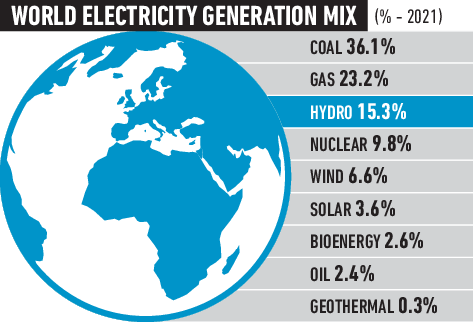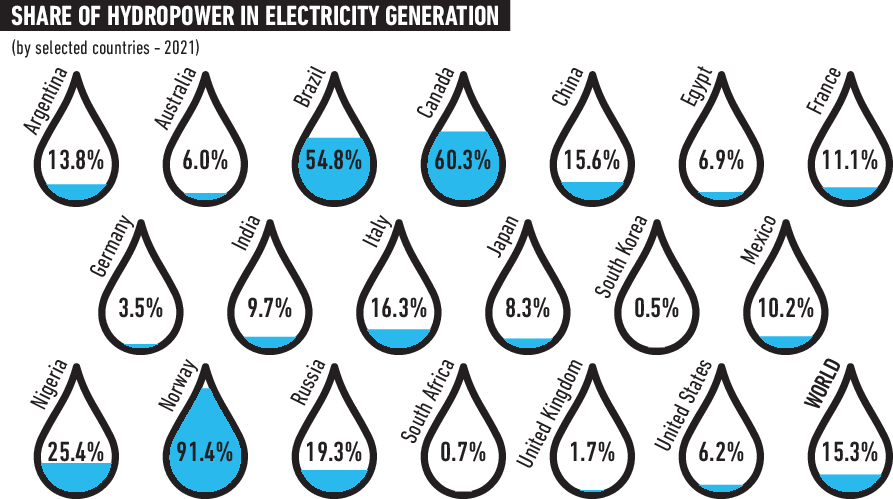
Energy Sources: Hydro
Used since ancient times, it is nothing more than the transformation of potential energy from flowing water into kinetic energy. The factors involved are a body of water, the slope it travels and the gravity that sets it in motion.
In addition to the dam that provides the upstream water reservoir, a hydroelectric power plant is made up of the penstocks that connect the reservoir to the turbine and a generator and transformer, which convert the mechanical energy of the turbines into electricity.
There are four main types of hydropower systems:
run-of-river (channeling flowing water from a river through a canal or penstock to spin a turbine);
storage (a large system that uses a dam to store water in a reservoir and later release it when needed);
pumped storage (using water that has been previously pumped from a lower source to an upper reservoir);
offshore hydropower (using tidal currents or the power of waves to generate electricity from seawater).
The benefits are substantial renewability and an infinite source of life, while the disadvantages might concern the environment.
- BP, Statistical Review of World Energy 2022;
- EIA (US Energy Information Administration), International Energy Statistics [Last accessed 04 January 2023];
- IEA (International Energy Agency), World Energy Outlook 2022;
- IHA (International Hydropower Association), Hydropower Status Report 2022
